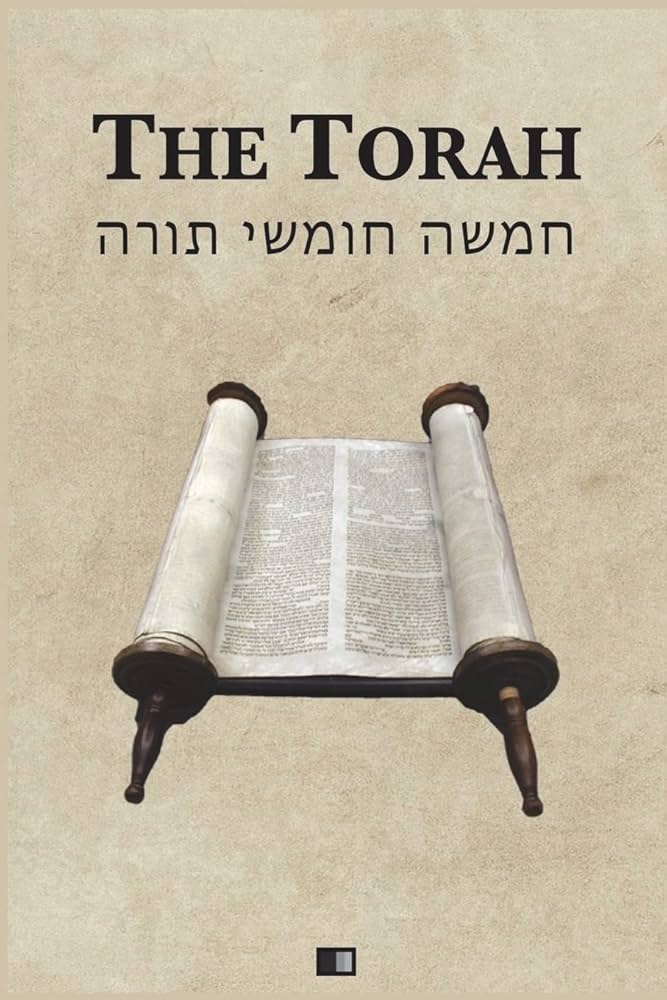Introduction to Umrah International
At Umrah International, we believe in the power of spiritual exploration and understanding. Our commitment extends beyond facilitating journeys to the holy sites; we aim to enhance your experience through knowledge of significant religious texts and traditions. In this extensive examination of the Torah, we delve into its origins, meanings, and impact across various faiths, inviting you to reflect on its relevance in your spiritual journey.
Defining the Torah
The Torah, known in Biblical Hebrew as תּוֹרָה (Tōrā), translates to “Instruction,” “Teaching,” or “Law.” It consists of the first five books of the Hebrew Bible: Genesis, Exodus, Leviticus, Numbers, and Deuteronomy. Within Christianity, these texts are collectively referred to as the Pentateuch or the Five Books of Moses. In Jewish tradition, it is often designated as the Written Torah (תּוֹרָה שֶׁבִּכְתָב, Tōrā šebbīḵṯāv). When utilized for liturgical purposes, it is rendered in the form of a Torah scroll (Hebrew: ספר תורה, Sefer Torah). In contrast, when bound in book format, it is called the Chumash, frequently supplemented with rabbinic commentaries.
In rabbinic discourse, “Torah” encompasses not only the written text but also the Oral Torah (תורה שבעל פה, “Torah that is spoken”). This Oral Torah comprises interpretations and elaborations believed to have been passed down through generations, ultimately codified in texts such as the Talmud and Midrash. According to tradition, all teachings within the Torah—both written and oral—were divinely imparted to Moses at Mount Sinai, forming the foundation of Jewish law and ethics. Remarkably, the Midrash claims that the Torah existed before the world itself, serving as a divine blueprint for Creation.
Despite ongoing scholarly debates regarding its authorship and compilation, a prevailing view in biblical scholarship recognizes the Torah as a cohesive literary and ideological unit, originating from various sources and reaching its final form during the Persian period, with potential later additions in the Hellenistic era.
The Torah is meticulously inscribed on a scroll by a scribe (sofer) in Hebrew. A portion of the Torah is traditionally read aloud every Monday and Thursday morning in synagogues, contingent upon the presence of ten adult males. This practice underscores the Torah’s centrality to Jewish communal life. Furthermore, the Torah’s significance extends beyond Judaism; for example, the Samaritan Pentateuch serves as a sacred text for the Samaritans, while in Islam, the Tawrat (Arabic: توراة) is regarded as a holy scripture believed to have been revealed to prophets among the Children of Israel.
Etymology and Conceptual Understanding
The term “Torah” derives from the Hebrew root ירה, which, in the hif’il conjugation, translates to ‘to guide’ or ‘to teach.’ Thus, the term encapsulates notions of “teaching,” “doctrine,” or “instruction.” The common interpretation of “law” may lead to a misunderstanding of its broader implications. The Alexandrian Jews who translated the Septuagint adopted the Greek term nomos, which signifies standard or norm, and this terminology subsequently influenced Latin and other translations.
In its most expansive sense, “Torah” encompasses the entire spectrum of authoritative Jewish teachings, including both Written and Oral traditions. This comprehensive definition emphasizes the importance of talmud torah (תלמוד תורה, “study of Torah”), which highlights the central role of education and engagement with these teachings in Jewish life.
Historical Context and Alternate Names
Historically, references to the initial segment of the Hebrew Bible are found in titles such as “The Torah of Moses.” However, this designation does not appear within the text itself or in the writings of pre-Exilic literary prophets. It surfaces in later texts like Joshua and Kings, where its use may imply a broader corpus in post-Exilic literature.
Christian scholars frequently refer to the Torah’s five books collectively as the ‘Pentateuch,’ a term derived from the Greek πεντάτευχος (pentáteukhos), meaning ‘five scrolls.’ In Islamic tradition, the Arabic term “Tawrat” signifies the Torah, viewed as a divinely revealed scripture.
Content Overview of the Torah
The Torah commences with the Creation narrative, detailing the early history of the Israelite people, their descent into slavery in Egypt, and the crucial moment of receiving the Torah at Mount Sinai. It concludes with the death of Moses, just before the Israelites are poised to enter the Promised Land of Canaan. Interwoven throughout the narrative are essential teachings, including civil laws and religious obligations, such as the Ten Commandments.
The five books of the Torah are traditionally identified by their opening phrases, reflecting their thematic essence:
- Bəreshit (בְּרֵאשִׁית, “In the beginning”) – Genesis: This book divides into two distinct sections: the Primeval History (chapters 1–11), which encompasses the creation narrative and the early patriarchal stories, and the Ancestral History (chapters 12–50), focusing on the lives of the patriarchs Abraham, Isaac, Jacob, and Joseph. It underscores themes of covenant and divine promise.
- Shəmot (שְׁמוֹת, “Names”) – Exodus: This book narrates the Israelites’ liberation from slavery in Egypt through divine intervention. It highlights the pivotal role of Moses as the leader who guides his people through the wilderness to Mount Sinai, where they enter a covenant with Yahweh, receiving the foundational laws and instructions for building the Tabernacle.
- Vayikra (וַיִּקְרָא, “And He called”) – Leviticus: This book provides detailed regulations regarding rituals, ethical conduct, and the responsibilities of the priesthood. It includes laws about purity, sacrifices, and the observance of holy days, embodying the principles of holiness and community.
- Bəmidbar (בְּמִדְבַּר, “In the desert”) – Numbers: This book chronicles the Israelites’ journey through the wilderness, including the census of the tribes and the challenges they face. It explores themes of faithfulness, rebellion, and divine judgment, culminating in the Israelites’ arrival at the borders of Canaan, where they prepare for the conquest.
- Dəvarim (דְּבָרִים, “Things” or “Words”) – Deuteronomy: This book features a series of speeches delivered by Moses, reflecting on the Israelites’ journey and reinforcing their covenant with God. It emphasizes the importance of obedience to God’s laws, with a poignant reminder of God’s unity and the necessity of faithfulness.
The Torah: Composition and Historical Context
Mosaic Authorship: Traditional Beliefs
The Torah is traditionally ascribed to Moses, who, according to the Talmud, transcribed the text during the 40 years the Israelites wandered in the desert. The last eight verses of Deuteronomy, which recount Moses’ death and burial, are said to have been penned by Joshua. This tradition underscores the belief that Moses acted as a divine scribe, faithfully documenting God’s commandments and the history of the Israelites.
Ezra’s Role in Recompilation
According to Jewish tradition, Ezra significantly recompiled the Torah during the Second Temple era. The Talmud notes that Ezra transitioned the script from the older Hebrew to the Assyrian script, believed to have been introduced during the Jewish exile in Assyria. While some, like the Maharsha, argue that Ezra did not alter the text itself due to the strict prohibitions against changes in Deuteronomy 12:32, his contributions to the text’s preservation are widely recognized.
Scholarly Perspectives on Authorship
Challenging Traditional Views
In contrast to traditional beliefs, many modern scholars dispute the idea of Mosaic authorship. They propose that the Torah is a composite work authored by multiple individuals over several centuries. The documentary hypothesis, which dominated scholarly discourse for much of the 20th century, identifies four distinct sources—J (Jahwist), E (Elohist), P (Priestly), and D (Deuteronomist)—that were later combined by a redactor. The oldest of these sources, J, is thought to have been written in the late 7th or early 6th century BCE, while the Priestly source (P) is believed to have emerged around the 5th century BCE.
Evolving Hypotheses in Torah Studies
The late 20th century marked a significant shift in the academic landscape regarding the documentary hypothesis. Researchers began to explore the connections between written texts and oral traditions, leading figures like Rolf Rendtorff to suggest that the Torah was formed from independent narratives, gradually compiled in two major editorial phases. Meanwhile, John Van Seters proposed a supplementary hypothesis, which posits that the Torah evolved through a series of additions to existing texts.
Today, most scholars recognize Deuteronomy as a critical source, likely originating from the law-code associated with King Josiah’s court. However, ongoing debates persist regarding the specifics of Josiah’s reforms and their implications for the Torah’s development.
Historical Context of the Torah’s Compilation
Final Compilation during the Persian Era
The prevailing view among scholars is that the Torah reached its final form during the Persian period, likely between 450 and 350 BCE. This aligns with traditional Jewish beliefs attributing the compilation to Ezra. Two primary theories explain the circumstances surrounding the Torah’s composition. The first, suggested by Peter Frei, posits that Persian authorities required the Jews to present a unified legal document as a condition for local governance. Although Frei’s theory has faced critiques, the relationship between Persian rule and the Jewish community remains a crucial area of inquiry.
The second theory, associated with Joel P. Weinberg, argues that the Exodus narrative was specifically crafted to address the needs of a post-exilic Jewish community centered around the Temple, functioning as a communal and religious framework.
Debates on Timing of Final Formation
While many scholars date the final compilation of the Pentateuch to the Persian period, some propose a later formation during the Hellenistic or Hasmonean periods. For example, Russell Gmirkin suggests a Hellenistic dating based on the absence of references to a written Torah in the Elephantine papyri, which document a Jewish community in Egypt.
The Adoption and Implementation of Torah Law
Ezra’s Impact on Torah Observance
Wellhausen’s seminal work posited that the observance of Torah law became widespread around 444 BCE, particularly following Ezra’s public reading of the Torah in Jerusalem. This event, recorded in the Book of Nehemiah, is considered a foundational moment in the establishment of Judaism as a faith grounded in the Torah. However, some scholars, such as Yonatan Adler, argue that evidence for widespread adherence to the Torah only appears in the 2nd century BCE, suggesting a significant development during the Hasmonean dynasty.
In contrast, John J. Collins posits that the observance of Torah laws began during the Persian period, focusing initially on a set of ancestral laws that expanded significantly during the Maccabean revolt.
The Importance of the Torah in Jewish Life
Traditional and Contemporary Views on Authorship
In Orthodox Judaism, the belief remains that both the Oral and Written Torah were given to Moses at Sinai around 1312 BCE, with the Written Torah documented over the following forty years. However, many non-Orthodox scholars support the modern consensus that acknowledges multiple authorship over an extended period.
While classical rabbinic thought maintains the view of a completely Mosaic and divinely inspired Torah, Reform and Conservative movements challenge this perspective, advocating for a critical examination of the text’s origins.
Ritual Practices Surrounding the Torah
Torah Reading and Its Significance
K’riat HaTorah, or Torah reading, is a central ritual in Jewish religious life. This practice, established by Ezra following the Babylonian exile, involves the public recitation of passages from the Torah scroll. The ceremony includes removing the Torah from the ark, chanting the selected sections, and returning the scroll. This ritual is distinct from academic study and has remained relatively unchanged in Orthodox communities for over two millennia.
Reform and Conservative Judaism have adapted certain aspects of this ritual, but the fundamental structure typically remains the same. Each week, a portion of the Torah is read, ensuring that the entire text is completed annually.
Celebrating Simchat Torah
Simchat Torah is an annual holiday celebrating the conclusion and renewal of the Torah reading cycle, emphasizing the Torah’s vital role in Jewish identity and community.
Legal and Ethical Dimensions of the Torah
Biblical Law and the Role of the Oral Torah
The Torah comprises narratives, legal statutes, and ethical principles collectively termed biblical law or commandments. These laws, often associated with Mosaic Law, form the backbone of Jewish legal tradition. The Oral Torah serves as a critical supplement, providing interpretations and clarifications for many laws.
Rabbinic tradition holds that Moses received the Oral Law alongside the Written Torah at Sinai. Many commandments, such as those concerning Tefillin, Kashrut, and Shabbat, require additional explanations, which are found in the Oral tradition. Initially forbidden from being documented, the Oral Law was eventually written down to ensure its preservation during times of persecution, culminating in texts like the Mishnah and the Talmud.
Contemporary Perspectives on Jewish Law
Orthodox and Conservative branches regard the Talmud as authoritative for halakha (Jewish law), while Reform and Reconstructionist Judaism approach these texts as historical rather than binding. Humanistic Judaism critically engages with the Torah, viewing it as a sociopolitical document rather than an absolute moral guide, promoting a broader understanding of Jewish ethics and behavior.
An In-Depth Look at Torah Translations
Aramaic Translations: The Targum
The practice of translating Hebrew scriptures into Aramaic is documented in the Book of Ezra, indicating its significance during the 6th century BCE. Aramaic was the common language among Jews after the Babylonian exile, making these translations essential for accessibility and understanding. The term Targum refers specifically to these translations, often conducted during public readings in synagogues by a designated official known as the meturgeman. This individual would translate the Hebrew text into Aramaic, allowing the congregation to grasp the meanings of the scriptures.
While oral translations were prevalent, the formal documentation of the Targum didn’t occur until the post-Talmudic period, around the 5th century CE. It was during this time that a recognized written version emerged, solidifying the Targum’s role in Jewish religious practice.
Greek Translations: The Septuagint
The Septuagint represents one of the earliest comprehensive translations of the Torah into Greek, specifically Koine Greek, and was produced in the 3rd century BCE. This translation was pivotal for Greek-speaking Jews and Hellenistic communities, as it provided access to the Hebrew scriptures in a widely understood language. The Septuagint not only translates the Hebrew text but also includes additional material and variant readings, reflecting the diverse traditions of early Judaism.
Subsequent Greek translations emerged, including those by Aquila, Symmachus, and Theodotion, although most survive only in fragmentary form. These versions contributed to the rich tapestry of biblical translation history and influenced both Jewish and Christian theological developments.
Latin Translations: The Vulgate
The early Latin translations of the Torah, collectively known as the Vetus Latina, were informal adaptations based on the Septuagint. However, a significant milestone in Latin biblical translation was achieved with the work of Saint Jerome in the 4th century CE. Jerome’s Vulgate became the authoritative Latin text of the Bible, including the Torah, and is still influential in many Christian denominations today.
Jerome’s translation aimed for accuracy and clarity, incorporating corrections and improvements based on the Hebrew text. His work set a standard for subsequent translations and influenced the Latin-speaking Christian world for centuries.
Arabic Translations: Judeo-Arabic Versions
With the establishment of Islamic rule in the 8th century CE, Arabic emerged as the primary cultural and scholarly language for Jews in the Islamic world. This linguistic shift prompted the creation of translations of biblical texts into Judeo-Arabic, often using the Hebrew alphabet.
Notable among these translations is the work of Saadiah Gaon, who produced a highly regarded Arabic translation of the Torah, known as Targum Tafsir. This translation not only conveyed the Hebrew text but also included commentary and interpretation, enhancing its educational value. There is scholarly debate regarding whether Saadiah’s translation represents the first Arabic rendition of the Torah, but his contributions remain crucial in the history of Jewish textual transmission.
Modern Translations: Jewish and Christian Contributions
The Torah has undergone extensive translation into many modern languages, driven by both Jewish and Christian scholars. Prominent translations into languages such as English, German, Russian, French, and Spanish have emerged over the years.
In German, the translation by Samson Raphael Hirsch is particularly noteworthy, as it reflects both linguistic fidelity and a commitment to traditional Jewish values. Similarly, the Artscroll publication series has produced various English translations that resonate with contemporary Jewish readers, combining traditional interpretations with accessible language.
Christian denominations have also played a significant role in translating the Torah as part of the broader Old Testament canon. Hundreds of translations exist across different languages, reflecting the text’s central importance in Christian theology.
Samaritanism: The Samaritan Pentateuch
The Samaritan Torah, or Samaritan Pentateuch, offers a distinct version of the Torah that diverges from the Jewish Masoretic Text. Written in the Samaritan script—a direct descendant of the Paleo-Hebrew alphabet—this text features approximately 6,000 variations from the Jewish Torah. While many of these differences are minor, others carry substantial theological implications, such as the Samaritan commandment to build an altar on Mount Gerizim.
Samaritans have also translated their Pentateuch into Aramaic, Greek, and Arabic, demonstrating the text’s adaptability and significance across cultural contexts. The preservation of these variations provides valuable insights into the historical and religious dynamics between Judaism and Samaritanism.
Christianity’s Relationship with the Torah
Christian denominations recognize the Torah as foundational, often referred to as the “Five Books of Moses” or “Mosaic Law.” While specific versions of the Old Testament may vary among denominations, the core teachings of the Torah remain integral to Christian doctrine. This shared heritage highlights the interconnections between Judaism and Christianity, particularly in the understanding of law, ethics, and narrative.
The Torah in Islam: The Concept of Tawrat
Within Islamic tradition, the Torah, known as the Tawrat, is viewed as a divine revelation granted by God to the prophets of Israel. The Quran acknowledges the Tawrat alongside other holy texts, affirming its significance in the Abrahamic tradition. However, Islamic teachings suggest that the original Torah has been altered over time, a concept known as tahrif.
Muslims hold the Torah in high regard, often referencing it to enrich their understanding of the Quran. The practice of tafsir al-Qur’an bi-l-Kitab involves interpreting the Quran through the lens of biblical texts, including the Torah, allowing for a deeper exegetical exploration of both scriptures. Notable Muslim scholars have contributed to this dialogue, weaving insights from the Torah into their interpretations of the Quran.
Conclusion
In conclusion, the Torah serves as a cornerstone of Jewish identity and belief, profoundly influencing both Christianity and Islam. Its teachings provide ethical guidance, historical context, and a framework for communal life. At Umrah International, we recognize the integral role of such sacred texts in enriching spiritual journeys. We invite you to engage with the profound wisdom of the Torah as part of your exploration with us at Umrah International.

















